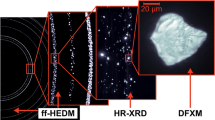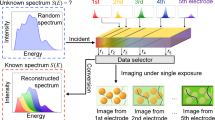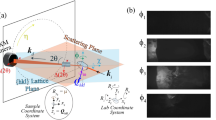Abstract
VERY high precision has been obtained in the measurement of X-ray diffraction angles, such that if translated into terms of changes in the crystal lattice constant, a precision of 1 part in 10,000,000 can be attained. All indications are that the limit of sensitivity can be extended even further. Fig. 1 shows the application of the method to measurements of the coefficient of thermal expansion of magnesium oxide over a temperature range of 1° C, and gives a clear idea of the sensitivity that is at present being obtained.
This is a preview of subscription content, access via your institution
Access options
Subscribe to this journal
Receive 51 print issues and online access
$199.00 per year
only $3.90 per issue
Buy this article
- Purchase on SpringerLink
- Instant access to full article PDF
Prices may be subject to local taxes which are calculated during checkout
Similar content being viewed by others
References
Bond, W. L., Acta Cryst., 13, 814 (1960).
Bragg, W. H., and Bragg, W. L., X-rays and Crystal Structure (G. Bell and Sons, London); 1915 ed., 29 and 30; 1925 ed., 23.
Author information
Authors and Affiliations
Rights and permissions
About this article
Cite this article
BAKER, T., GEORGE, J., BELLAMY, B. et al. Very High Precision X-ray Diffraction. Nature 210, 720–721 (1966). https://doi.org/10.1038/210720a0
Issue date:
DOI: https://doi.org/10.1038/210720a0



